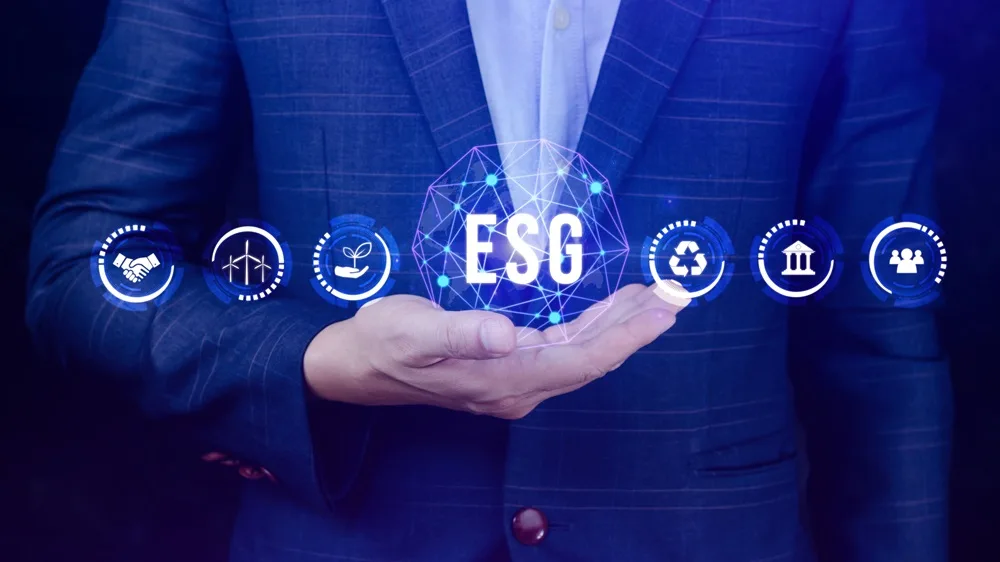The Role of EHS Software in Creating a Culture of Safety in the Workplace
The importance of a robust Environment, Health, and Safety (EHS) strategy cannot be overstated. More than simply a list of guidelines, an effective EHS initiative raises a culture of workplace safety, where risk-awareness and prevention are intrinsic to every operation. To achieve this, companies must first understand the role of EHS software in creating a culture of safety. EHS software is a tool that helps organizations manage their environmental, health and safety (EHS) programs. It provides a central repository for all relevant data, including incident reports, inspections and audits, training records and more. EHS software also provides a platform for managing the entire lifecycle of an EHS program, from planning and implementation to ongoing maintenance.
According to a study by the National Center for Biotechnology Information, for organizations to identify and mitigate risks, improve compliance with regulations and standards, reduce costs associated with accidents and injuries, and improve overall safety performance, they have to answer the following questions: What are the most effective approaches to achieving the stated goals? How will research efforts be coordinated to ensure a coherent approach to achieving the stated goals?
Modernizing Safety Operations
With increasing regulatory requirements and broader EHS concerns, organizations need to deal with a large number of manual documents and logs. This can be time-consuming and error-prone, especially when it comes to managing safety data. EHS software provides a single point of access for all safety-related information, making it easier to track trends and identify areas for improvement.
Enhancing Communication
Effective communication is a foundation of any safety culture. EHS software can help organizations improve communication by providing a central repository for all the information about safety. This makes it easier to share data with employees, contractors, and other stakeholders, which in turn reduces the risk of accidents and injuries.
Augmenting ESG Commitments
ESG (environmental, social and governance) is a growing trend in the business world. Many companies are now making commitments to improve their environmental performance, reduce waste and emissions, and promote social responsibility. EHS software can help companies meet these commitments by providing a platform for tracking and reporting on their progress.
Tailored to your industry needs
Safety management software can be specifically made to meet the needs of your industry. This means you can choose from a range of modules and features designed to help you manage safety more effectively. For example, if you work in construction or manufacturing, you may want to focus on risk assessments and incident reporting. If you are in healthcare, then you might need a system that allows you to track patient safety incidents and report them to regulatory bodies.
Promoting Compliance and Operational Excellence
In recent years, sustainability reporting has emerged as a beacon of transparency and responsibility, pivotal in reshaping the narrative of modern business practices. As we look into the importance of sustainability reporting, a nuanced understanding of the same will reveal its profound impact on corporate dynamics.
Enhance Corporate Transparency
The commitment to openness and transparency lies at the heart of sustainability reporting. By disclosing non-financial performance metrics, companies lay bare their environmental impact, social initiatives, and governance structures. This transparency not only fosters trust among stakeholders but also provides a clear lens through which investors, consumers, and regulatory bodies can assess a company’s commitment to responsible practices.
Build Stakeholder Trust and Credibility
Sustainability reporting bridges trust between companies and their diverse stakeholders. Investors increasingly scrutinize a company’s ESG performance as a key factor in their decision-making processes. By showcasing a genuine commitment to sustainability, businesses can attract conscientious investors, strengthen customer relationships, and build trust with employees. In an era where reputation is a valuable corporate asset, sustainability reporting becomes a strategic tool for fortifying credibility.
Align with Regulatory Requirements
The regulatory landscape is evolving, with an increasing focus on sustainable and responsible business practices. Sustainability reporting aligns with these evolving regulations, ensuring that companies not only meet current standards but also position themselves for compliance with future requirements. Embracing sustainability reporting minimizes legal risks and demonstrates a proactive approach to staying ahead of regulatory changes.
Foster a Culture of Environmental Sustainability
Sustainability reporting catalyzes a cultural shift within organizations, fostering a commitment to environmental sustainability. By quantifying and reporting environmental impact metrics, companies incentivize internal initiatives to reduce carbon footprints, minimize waste, and adopt eco-friendly practices. This cultural transformation extends beyond the confines of corporate offices, influencing suppliers, partners, and the broader business ecosystem.
Sustainability Reporting and Business Strategy
The integration of sustainability reporting into the fabric of business strategy marks a change in how companies envision their role in the global business. Beyond being a regulatory requirement, sustainability reporting becomes a cornerstone of corporate strategy, shaping decision-making processes and influencing long-term trajectories.
Integration of Sustainability into Overall Business Strategy
Sustainability reporting is not an isolated activity but a strategic endeavor deeply embedded within the overarching business strategy. Companies that seamlessly integrate sustainability considerations into their core business practices are better positioned to navigate the complexities of the modern marketplace. This integration goes beyond compliance, transforming sustainability from a checkbox exercise into a driving force for innovation and resilience.
Demonstrating Long-Term Vision and Commitment
A commitment to sustainability is synonymous with a commitment to the future. Companies that prioritize sustainability reporting send a clear signal that they are not merely concerned with short-term gains but are invested in the long-term well-being of the planet and society. This resonates with stakeholders who increasingly seek partnerships with businesses that share a vision for sustainable and equitable growth.
Gaining a Competitive Edge in the Market
Sustainability reporting provides a unique avenue for companies to differentiate themselves in a competitive market. As consumers become more conscious of the environmental and social impact of their choices, businesses that transparently communicate their sustainability initiatives stand out. This competitive edge extends to attracting top talent, as employees are increasingly drawn to companies that align with their values.
ESG Reporting Frameworks
In sustainability reporting, the field is adorned with various frameworks designed to guide businesses in measuring and disclosing their Environmental, Social, and Governance (ESG) performance. Navigating this intricate terrain requires a nuanced understanding of the diverse frameworks available and selecting the most fitting approach for a company’s unique context.
Overview of Different ESG Reporting Frameworks
ESG reporting frameworks serve as structured guidelines for companies seeking to align their sustainability reporting with recognized standards. Notable frameworks include the Global Reporting Initiative (GRI), Sustainability Accounting Standards Board (SASB), Task Force on Climate-related Financial Disclosures (TCFD), and the Carbon Disclosure Project (CDP), among others. Each framework brings its own set of principles, metrics, and reporting guidelines, catering to different aspects of sustainability.
Choosing the Right Framework for Your Business
The selection of an ESG reporting framework is a strategic decision that aligns with a company’s industry, size, and operational context. Understanding the nuances of each framework allows businesses to choose the one that best captures their material ESG issues and resonates with their stakeholders. The choice influences how a company reports and shapes its sustainability strategy and performance.
Standardization and Global Comparisons
Standardization within ESG reporting frameworks facilitates comparability across industries and regions. It allows investors, consumers, and other stakeholders to assess and compare the sustainability performance of companies on a global scale. This standardization also fosters transparency and accountability, contributing to the broader narrative of responsible business practices.
To learn about the role of ESG software in building a more sustainable future, read this.
About VisiumKMS
At VisiumKMS, we are committed to staying ahead of the curve. Our process safety management software helps companies maintain all their process safety information in one system, using best-in-class, standardized workflows developed by industry experts! To discuss your needs with one of our experts, schedule a call with us here


